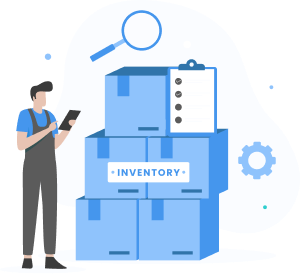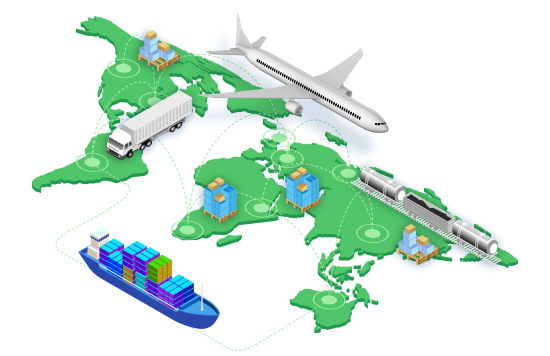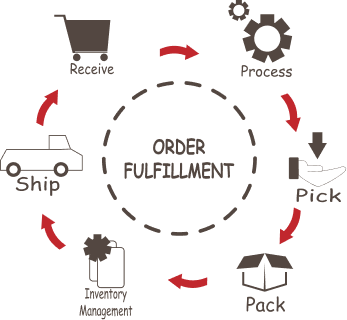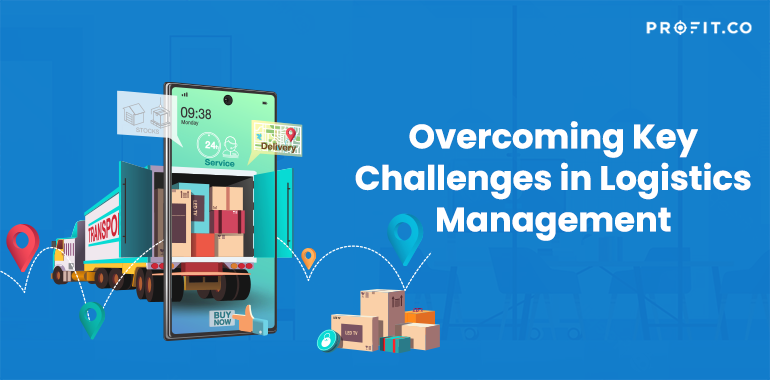Supply chain management includes various complex and dynamic processes, including logistics. While it might seem straightforward to an average consumer as simply moving goods from point A to point B, logistics involves much more, especially from a managerial perspective. In this field, logistics managers face a myriad of challenges that require not only attention to detail but also innovative problem-solving skills. Let’s delve into some of these critical challenges in logistics management and explore practical strategies for addressing them.
What is Logistics?
Logistics refers to the intricate processes of acquiring, storing, and transporting goods from their origin to the point of consumption. This complex field involves a detailed and strategic management approach to ensure the smooth flow of items through the supply chain. Logistic managers, commonly known as logisticians, play a crucial role in this process. Their responsibilities include identifying and evaluating distributors and suppliers, ensuring that the materials and products are efficiently and cost-effectively moved from suppliers to end consumers.
Originally a military term, logistics was used to describe the process of how military personnel obtained, stored and moved equipment and supplies. The term has since transitioned into widespread use in the business sector, particularly among professionals working in supply chain management. In this context, logistics has become a vital component of global commerce, underpinning the operations of industries worldwide. Efficient logistics handling can significantly impact a company’s bottom line, customer satisfaction, and overall market competitiveness.
The Key Aspects of Logistics
Logistics is a multifaceted domain, each integral to the smooth operation of supply chain management. Let us understand these components in depth for effective logistics management.
Inventory management
This is a critical process where companies monitor and control the quantities of stock needed at any given time. Effective inventory management involves finely balanced decision-making, ensuring no excess or a shortage of goods exists. Optimizing stock levels requires keen insight into market trends, demand forecasting, and sales data analysis to optimize stock levels. Since unsold inventory represents tied-up capital, managing it efficiently is crucial for maintaining financial health and ensuring timely availability of products for sale.

Transportation management
This aspect deals with the physical movement of goods across various channels such as land, sea, and air. Effective transportation management involves optimizing routes and delivery schedules, selecting the right mode of transport, and using transportation software for tracking and efficiency. This software aids in route planning, load optimization, carrier selection, and real-time tracking, ensuring goods are delivered promptly and cost-effectively.

Warehousing
Although often unseen by customers, warehousing plays a vital role in logistics. It involves the daily operations of managing a warehouse, including space organization, labor management, inventory control, and order fulfillment. The goal is to achieve perfect efficiency with least costs, ensuring that inventory is safely stored, easily retrievable, and efficiently managed. Warehouse management systems (WMS) are commonly used to streamline these processes, enhancing accuracy and efficiency in order fulfillment.

Order fulfillment
This process encompasses everything from the receipt of an order to the delivery of goods to the customer, including handling returns. Effective order fulfillment requires a coordinated effort across several departments to ensure that customer orders are processed accurately, inventory is picked and packed efficiently, and deliveries are made on time. This process is crucial for customer satisfaction and loyalty, as it directly impacts the customer’s experience with the company.

Demand planning
This strategic process involves analyzing sales data over time to accurately forecast future demand. By understanding and predicting customer demand, companies can better plan their inventory levels, labor needs, and resource allocation. This foresight allows for more efficient operations, minimizing waste and excess costs while ensuring the supply chain is agile enough to respond to market changes. Advanced analytics and machine learning are increasingly used in demand planning to enhance accuracy and predictability.

The complexity of logistics is highlighted when we consider different types of goods and the unique challenges they present. Transporting oil, for instance, is a high-stakes operation that demands meticulous attention to safety due to its flammable nature and the potential for environmental disasters like oil spills. The logistician’s role extends beyond mere transportation efficiency; it encompasses implementing rigorous safety measures and contingency planning. In contrast, logistics for perishable food items prioritize speed and preservation. These goods must be delivered swiftly to maintain freshness, requiring a logistic network that ensures rapid, yet careful handling to avoid spoilage. Meanwhile, companies like Amazon exemplify logistical prowess on a grand scale. Amazon’s success hinges on its robust logistics network, capable of delivering a wide range of products with efficiency and reliability. This has been achieved through significant investments in advanced technologies and systems, allowing them to maintain a competitive edge in the home delivery market despite challenges from other e-commerce giants like Flipkart and Alibaba. The expertise of Amazon’s logisticians plays a critical role in fulfilling their customer promises and sustaining their market dominance.
The line between disorder and order lies in logistics
Logisticians Responsibilities
These responsibilities, while diverse, interconnect to ensure the efficient transportation of goods from supplier to consumer. To further illustrate a successful logistician will be able to take on the following responsibilities
- Management of supervision and plans
- Order management
- Accurate and quality-assured packing, handling, and transport
- Inbound and outbound logistics
- Managing supply chain
- Tracking goods across the supply chain
- Managing vendors relationships
- Removing bottlenecks and scrutinizing goods
While the responsibilities might seem straightforward, there are challenges, just like any other supply chain role. Perfect management within does not mean your work isn’t vulnerable to external disruptions.

Challenges in Logistics
As we have seen, trade can easily be disrupted by changes in the economy, sometimes unexpectedly. Many of these changes can be categorized under the following challenges:
Transportation cost management
The Russia-Ukraine conflict is an example of rising transportation costs due to geopolitical events. This conflict disrupted key shipping routes, especially in the Black Sea, leading to longer transit times and higher fuel expenses for shipping companies. Additionally, increased security risks elevated insurance premiums, further boosting costs. Businesses relying on these routes faced the dilemma of absorbing these heightened costs or passing them on to consumers.
Unexpected route closures
Unexpected route closures in logistics can significantly disrupt the supply chain. When key transportation routes are blocked or shut down due to various reasons such as political conflicts, labor disputes, or natural disasters, it poses a major challenge for logistics management. Companies are often forced to find alternative routes or modes of transport, which can be less efficient and more costly. These disruptions not only delay shipments but can also lead to a ripple effect of supply chain inefficiencies, impacting businesses and consumers alike.
Tracking difficulties
Smaller businesses often lag in adopting advanced tracking technologies. For instance, in developing countries, many small-scale exporters still rely on paper-based systems, making it difficult to integrate with the digital tracking systems used by larger companies, leading to inefficiencies and delays.
Lack of transparency
E-commerce companies, particularly smaller ones, sometimes struggle to provide real-time tracking updates to customers. This lack of transparency leads to customer unhappiness and impacts brand loyalty. In 2018, a notable example of a lack of transparency in logistics occurred with the U.K.-based online fashion retailer, ASOS. The company faced significant challenges during the peak holiday season due to a failure to update customers about delays in order processing and delivery times.
Poor communication
In 2010, the Eyjafjallajökull volcano eruption in Iceland disrupted European air travel, significantly impacting global logistics. The main challenge was ineffective communication among airlines, logistics companies, regulatory bodies, and customers about air space closures and flight cancellations. This confusion led to substantial delays in goods transportation, highlighting the crucial need for clear and coordinated communication in logistics, especially during unexpected disruptions.
Empty Miles
Trucking companies often face the issue of returning with empty trailers after delivering goods. This “empty mile” problem not only adds to operational costs but also impacts environmental sustainability. Efforts are being made to develop logistic models that minimize these empty return trips.
Delays and disruptions
Natural disasters and pandemics are prime examples of unforeseen circumstances that can cause significant delays in logistics operations. For instance, the 2017 Hurricane Harvey in the United States dramatically disrupted logistics channels, particularly in the Gulf Coast region, which is crucial for the oil and gas industry. The hurricane led to the shutdown of manufacturing facilities and ports and damage to transportation infrastructure. This disruption caused a sharp increase in fuel prices due to the closure of refineries. As a result, trucking and shipping companies faced higher operating costs, impacting their ability to transport goods efficiently. This increase in transportation costs had widespread implications, affecting numerous businesses that depended on transporting goods through this key region. This scenario underscores how natural disasters can unexpectedly impede logistics operations, leading to delays and increased costs across various sectors.
As we can see, these problems come in many forms with few solutions. So if you cannot account for external disruptions, you can instead ensure that whatever is in your control is robust and efficient. But, in the end, we are still talking about people.
Implementing OKRs in Logistics
Technology is a great solution for many of these challenges, but the cost of implementation makes it a daunting option for logisticians. That is why what they first need is a change in mindset. That is where the OKR framework may help. It stands for Objectives and Key Results. Not only a measure of performance, OKRs excel in motivating aspirational change. The executive level of an organization can decide what goal would most benefit the business currently and then decide on criteria to measure progress towards this goal. It is similar to KPIs but is different in that success is found not only in reaching the goal but also in the attempt to do so. That is why it can be very useful to logisticians, who would have clear ideas on how to improve logistics but have trouble finding ways to implement them.
To learn more about how this can help your organization!
You can follow these basic steps on how to implement an OKR in your logistics organization
1. Clarify your greatest bottleneck
While several challenges are usually present, some would be more impactful than others. Let’s say we want to improve overall logistics.
Objective: Improve overall Logistics performance
2. Brainstorm solutions
Given that the average supply chain will have several individuals involved, it is important to ensure you have several perspectives when evaluating solutions. Gather your team and come up with solutions.
3. Set Key Results
Choose 3-5 Key Results that you think will encourage your employees to break out of their usual patterns and test themselves. They should be time-specific, measurable, and aspirational.
KR1: Reduce transportation costs from 70% to 62%
KR2: Increase on-time deliveries from 90% to 98%
KR3: Decrease average delivery lead time from 5 days to 3 days by the end of the year.
4. Communicate
OKRs are only effective when every person in the supply chain is aware of the goal they should be working towards. Following this, you should encourage them to create their OKRs to guide them toward the company’s objective.
5. Review
Last, and most importantly, you need to evaluate the progress of your OKRs. This is to understand why some things worked and others didn’t. Reviews are quarterly, while check-ins are weekly, though you can change that according to your preferences. It gives you time to make adjustments early on.
In the end, the driving force behind effective OKRs is the people, just as in logistics. Progress is built on commitment and creativity, and OKR is a methodology well-suited to encouraging that. It takes time and repetition but is reliable, as exemplified by Google, Amazon, and Intel. As logistics continues to evolve in a rapidly changing world, adopting OKRs can be a game-changer, ensuring that logistics operations are not only efficient but also resilient and forward-thinking.

